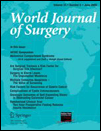Impact of Surgical Training on Incidence of Surgical Site Infection
Abstract
Background
Despite availability of other training forms, tutorial assistance cannot be entirely replaced in surgical education. Concerns exist that tutorial assistance may lead to an increased rate of surgical site infection (SSI). The purpose of the present study was to investigate whether the risk of SSI is higher after surgery with tutorial assistance than after surgery performed autonomously by a fully trained surgeon.
Methods
All consecutive visceral, vascular, and traumatological inpatient procedures at a Swiss University Hospital were prospectively recorded during a 24-month period, and the patients were followed for 12 months to ascertain the occurrence of SSI. Using univariable and multivariable logistic regressions, we assessed the association of tutorial assistance surgery with SSI in 6,103 interventions.
Results
Autonomously performed surgery was associated with SSI in univariable analysis (5.36% SSI vs. 3.81% for tutorial assistance, p = 0.006). In multivariable analysis, the odds of SSI for tutorial assistance was no longer significantly lower (Odds Ratio [OR] = 0.82; 95% Confidence Interval [CI]: 0.62–1.09; p = 0.163).
Conclusions
Surgical training does not lead to higher SSI rate if trainees are adequately supervised and interventions are carefully selected. Although other forms of training are useful, tutorial assistance in the operating room continues to be the mainstay of surgical education.




